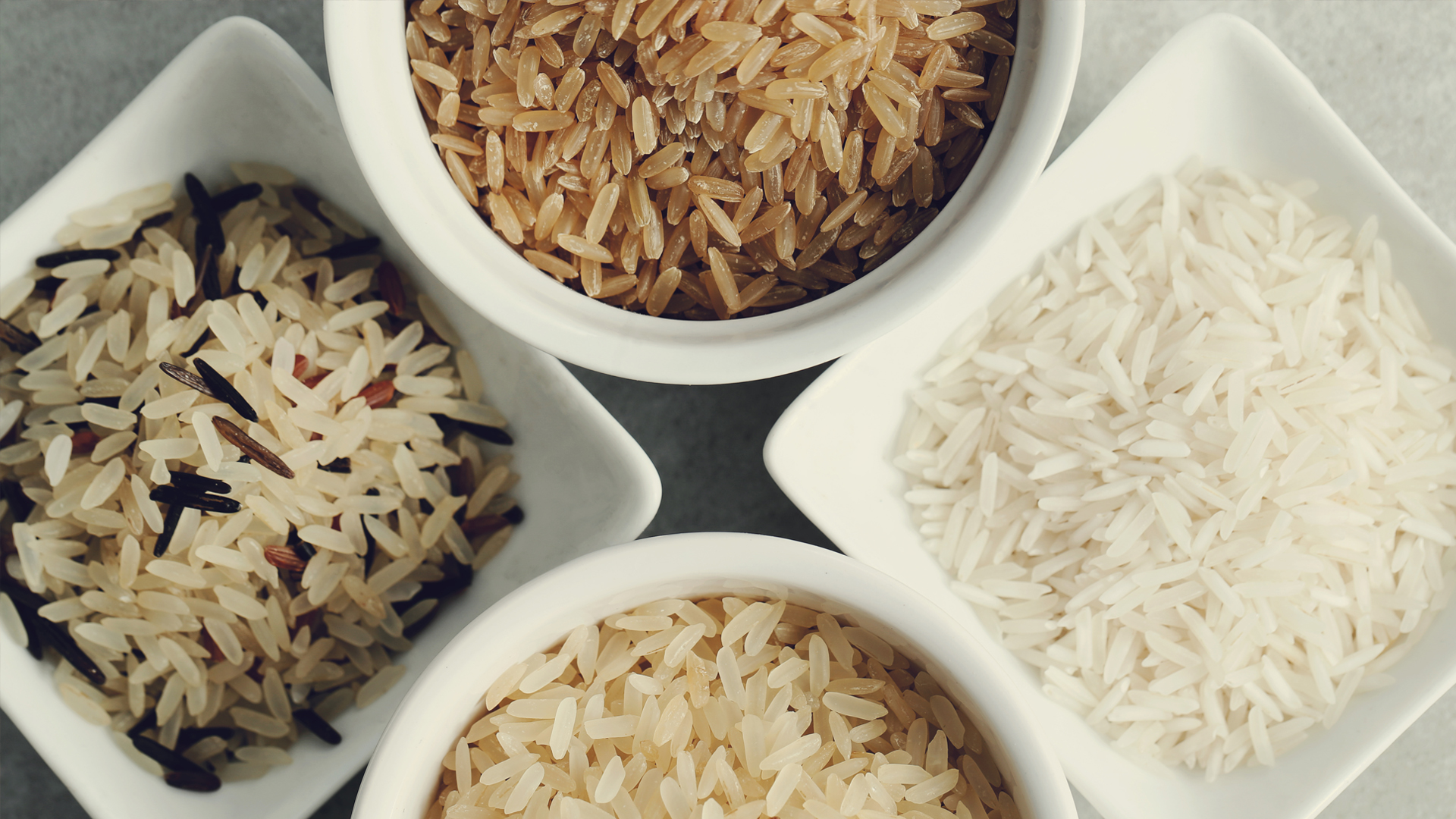Basmati Rice Vs White Rice
May 5, 2020 | by Sravani Pathakamuri | Posted in Nutrition Facts, Rice

Basmati is a variety of long, slender-grained aromatic rice which is traditionally from the Indian subcontinent.
Basmati rice is mostly used in making special dishes like biryanis in India. It give good aromatic smell which attracts people. Frequently served alongside various curries, roasted meats, or as the main ingredient in classic biryani.
Like all rice, basmati rice is also available in both as brown and white. In white rice, bran is removed. Brown basmati rice is with bran as it is rich in dietary fibre and essential oils. But brown basmati rice more tasty and nutty or crunchy than white basmati rice. Basmati rice also take more time and water to cook.
Benefits
As white rice is low in fiber there is no chance of bloating.
Brown rice doesn’t contain phytic acid and other anti-nutrients that reduce mineral absorption.
White rice can be a good source of carbs when consumed in moderation. Serve it with lean beef, poultry, or other high-protein foods to slow down carbohydrate absorption into your system.
Basmati rice contains antioxidants which helps to cure tumors. Wholegrain Basmati rice has the lowest GI (glycaemic index) of all rice types, which means once digested it releases its energy slowly keeping blood sugar levels more stable. So that it helps diabetic patient to manage sugar levels.
Key Points
Both regular white rice and white basmati rice are refined grains that had the bran and germ removed. For this reason, they are lower in fiber. Due to their low fiber and high carb content, both rice varieties may cause insulin and increase blood sugar. In long run metabolic disorders, diabetes may attack which are major risk factors for heart diseases.
Recent Posts
Categories
- Arthritis
- B vitamins
- Berries
- Best time to take
- Breasfeeding
- cancer
- Chronic Diseases
- COVID-19
- Dairy
- Deficiency
- Diabetes
- Diet
- Diseases
- FAQ's
- Fats
- Fever
- Hair
- health
- Kidney
- Leafy Vegetables
- Lung disease
- mango
- Meat
- Millets
- Minerals
- Myositis
- Nausea
- Nutrition Facts
- Nuts and Seeds
- Oats and Oatmeal
- Psoriasis
- Recipes
- Rice
- Skin
- spices and Condiments
- Summer
- Thyroid
- Varicose Veins
- Vegetables
- Vitamins
- Vomiting
- water
- weight gain
- weight Loss
Archives
- April 2024
- March 2024
- February 2024
- January 2024
- December 2023
- November 2023
- October 2023
- September 2023
- August 2023
- July 2023
- June 2023
- May 2023
- April 2023
- March 2023
- February 2023
- January 2023
- November 2022
- October 2022
- September 2022
- August 2022
- July 2022
- June 2022
- May 2022
- April 2022
- March 2022
- February 2022
- January 2022
- December 2021
- November 2021
- October 2021
- September 2021
- July 2021
- June 2021
- May 2021
- April 2021
- March 2021
- February 2021
- January 2021
- December 2020
- November 2020
- October 2020
- September 2020
- August 2020
- July 2020
- June 2020
- May 2020
- April 2020
- March 2020
- February 2020
- January 2020